Named for its two distinctive colors of dark green leaves and vibrant pink pinstripes, Ludisia discolor is a beauty of a jewel orchid.
Native to SE Asian rainforests, this terrestrial orchid is a fantastic fit for tropical terrariums.
Like other jewel orchids, Ludisia discolor is prized for its beautiful foliage, but once a year in winter, it’ll flower with a simple (but rather tall) white flower spike. It’s definitely one of the less temperamental terrarium orchids, and it’s a perfect first foray into the orchid world!
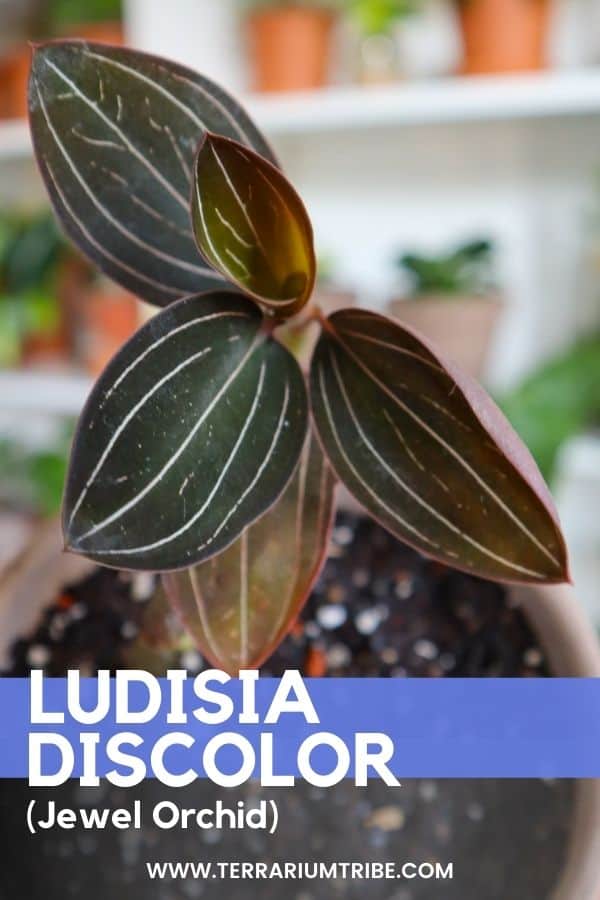
Where to Buy Ludisia discolor
See the links below to purchase from reputable terrarium plant shops and marketplaces (may include affiliate links).
Ludisia discolor Care & Growth
| Plant Type | Foliage |
| Lighting | Medium – high indirect light |
| Temperature | 55-80°F (12-26°C) |
| Watering | Regular, even moisture |
| Humidity | Medium – high humidity (40-80%) |
| Growth | 10-15 inches |
Lighting
The darkness of the leaf coloring suggests that Ludisia discolor can handle lower light areas, but it’ll do better under brighter, indirect light.
Definitely one to keep out of direct sunlight (if the colors of the leaves begin to fade, it’s probably getting too much light).
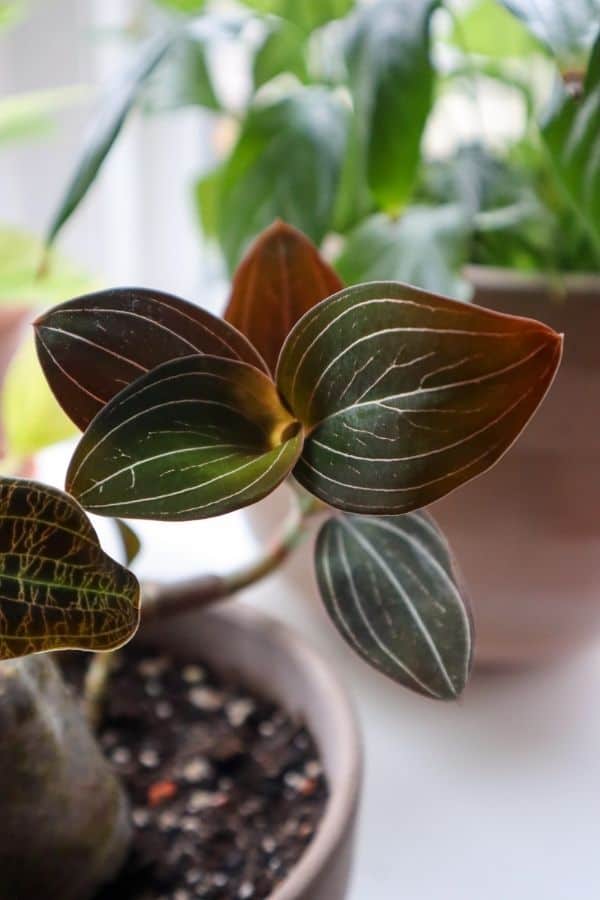
Watering
Ludisia discolor likes regular, even moisture. It’s important that this plant is not allowed to dry out, but equally, don’t saturate it with stagnant water either.
It’s one of the more forgiving orchids when it comes to watering, but it’s still the most important care factor to get right.
Substrate
To achieve the right level of substrate saturation to keep Ludisia discolor happy, select a mix that retains moisture well but also has excellent drainage.
Classic bark-based orchid mixes aren’t necessarily a good fit for this plant, instead try a regular tropical mix – supplementing with perlite or vermiculite where necessary.
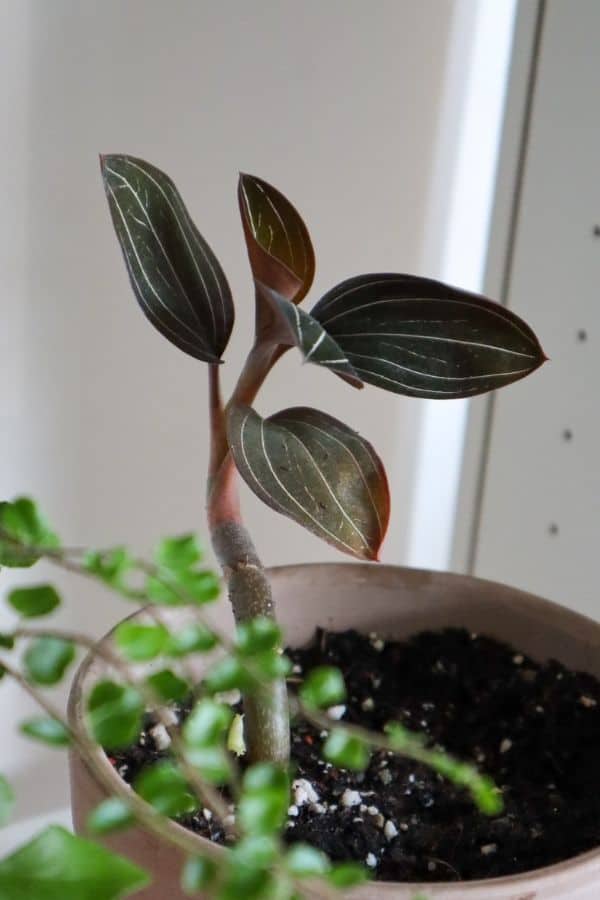
Temperature & Humidity
Humidity isn’t essential, but it is preferable for this jewel orchid, so it should do great in a closed terrarium.
Though thanks to its adaptable nature, it should also manage just fine in an open orchid terrarium.
As for temperature, it can handle a reasonable range but definitely enjoys a warm environment. Don’t let it drop below 10 degrees Celsius to keep it healthy.
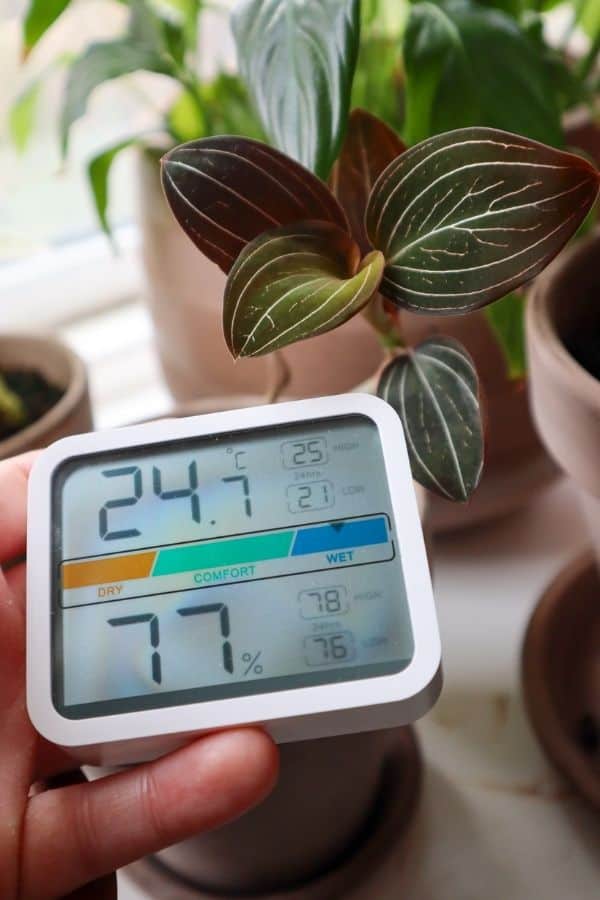
Growth
Ludisia discolor can be a somewhat prolific grower under the right conditions, and the mature plants are definitely one of the larger orchid species. Though thankfully, it’s not difficult to divide larger plants once matured.
When flowering, the stem can reach quite far above the leaves of the plant, so it can be better to trim those down if you have a smaller terrarium.
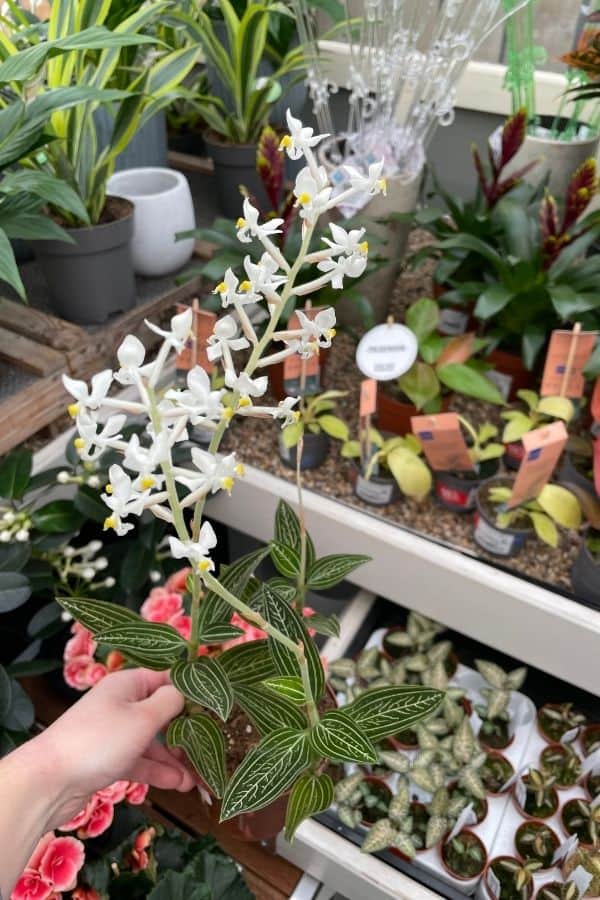
Propagation
Propagating Ludisia discolor is possible through simple division. It has a rhizomatic growth pattern, and once its offshoots reach maturity, they can be separated into viable plants of their own.
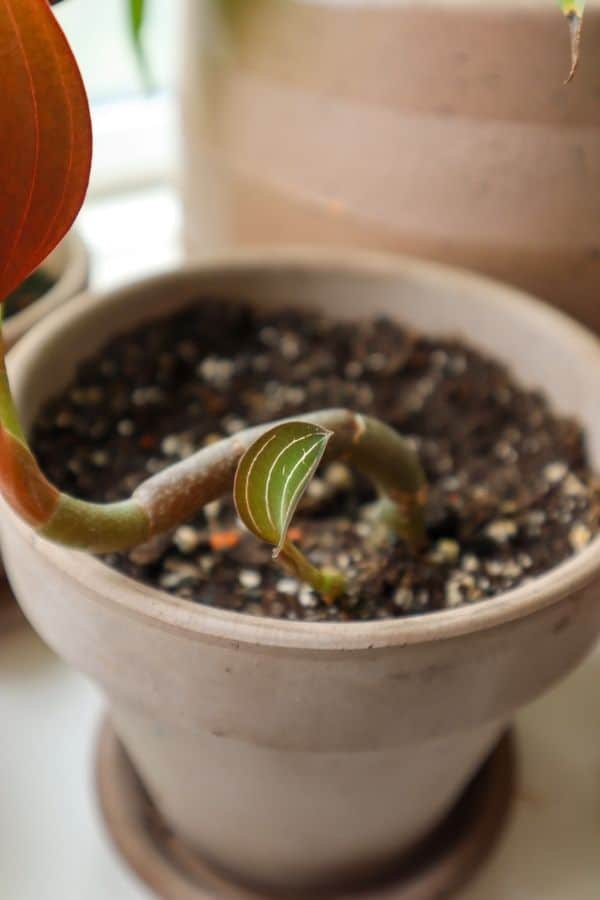
Varieties & Similar Plants
L. discolor ‘Nigrescens’ is the predominant cultivar available, and that’s the one mentioned here – the Black Jewel Orchid. The only other variety is L. discolor ‘Alba. It lacks the red leaf pigment and instead comes with deep green leaves and shimmery silver venation.
See Macodes petola for another great terrarium jewel orchid, or check out my jewel orchid guide for the full scoop.
Common Problems
As far as jewel orchids go, Ludisia discolor is definitely one of the easier ones to grow. The biggest thing to look out for is with watering, you cannot let this plant dry out.
